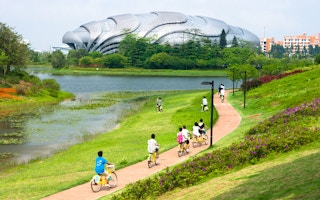On the occasion of World Cities Day, top United Nations officials are highlighting the key role of urban design in building sustainable, socially integrated and prosperous cities and human settlements.
“Good design can help tackle climate change. It reduces the impacts of disaster. It can help make our cities safer, cleaner, and more equal and integrative. It promotes equal access to services, jobs and opportunities, and fosters contentment,” Secretary-General Ban Ki-moon said in his message for the Day, observed annually on 31 October.
The theme of this year’s observance – the first following the adoption by Member States in September of the 17 Sustainable Development Goals – is “Designed to Live Together.”
The Secretary-General noted that the challenges of rapid urbanization figure prominently in the newly adopted 2030 Agenda for Sustainable Development. Goal 11 embodies a commitment to “make cities and human settlements inclusive, safe, resilient and sustainable.”
“And as part of an integrated agenda, cities and human settlements have an important role to play across the 17-goal spectrum,” he said.
Mr. Ban added that the UN Conference on Housing and Sustainable Urban Development (Habitat III), to be held in Quito, Ecuador in October 2016, will be an opportunity to discuss a New Urban Agenda that can harness the power and forces behind urbanization and mobilize them for the common good.
In his statement, the Executive Director of UN-Habitat, Joan Clos, said that urban form is the combination of streets, building typologies and networks of public spaces. “They form the underlying structure of the city, a skeleton around which people’s lives are built and activities carried out.”
Cities are one of “the most complex human creations,” he said, adding that good design contributes to social integration, equality and diversity; fosters sustainable use of shared resources; inspires lively neighbourhoods; and can make cities safer.
It can also foster proximity to jobs and services; help to create clean, healthy cities; and anticipate climate change and reduce the impacts of disasters.

















